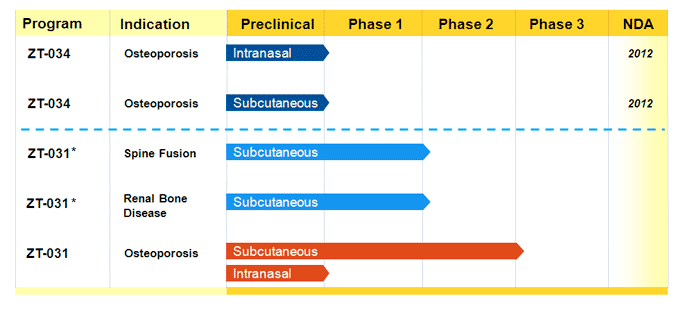Targeting Sclerostin in Osteoporosis
Continuing my previous post about emerging drugs for osteoporosis, one of the new classes in development are those that target sclerostin.
Sclerostin is a protein produced by osteocytes within bone that inhibits bone formation. It is thought to pass through the surface of bone where it acts on osteoblasts (cells responsible for bone formation). There it binds to low-density lipoprotein receptors and inhibits the Wnt/beta-catenin signaling involved in bone mass regulation.
There is some uncertainty in the scientific literature as to the precise method by which sclerostin acts on bone. However, the Wnt/beta-catenin osteocytic signaling does play a role in bone homeostasis.
Preclinical animal work using an antibody to sclerostin led to increased bone formation, bone mineral density and bone mineral strength. This supports the concept that inhibition of sclerostin has potential as a treatment for osteoporosis.
Interest in sclerostin has grown enormously, with over 50 abstracts presented on its measurement at the 2010 American Society of Bone and Mineral Research (ASBMR) annual meeting. Also last year, Biomedica and its distribution partner ALPCO Diagnostics launched the first commercial immunoassay kit for the measurement of circulating sclerostin.
Not surprisingly companies have started to look at sclerostin inhibition as a drug development target. The leader in the pack is Amgen with AMG 785, a sclerostin monoclonal antibody.
The phase 1 trial results published by Padhi et al in the January issue of the Journal of Bone and Mineral Research (JBMR) show that it was well tolerated in 72 healthy subjects that received AMG 785 or placebo.
AMG 785 is now in phase 2 clinical trials that will look more closely at dosing and efficacy. A 330 patient study to assess fracture healing is currently recruiting (NCT01081678). The study will look at three doses of AMG 785 (70mg, 140mg, 210mg ) given by injection subcutaneously (under the skin).
The study hypothesis is that giving AMG 785 to those with a new hip fracture will increase their healing. The functional healing will be measured using the timed-up-and-go (TUG) test i.e. the time to stand up on one’s own, walk three meters, turn around, walk back and sit down.
The estimated primary completion date for this trial is December 2012, so I don’t expect we will see some data till 2013 at the earliest.
Amgen already has a major osteoporosis franchise with denosumab, it’s RANKL inhibitor for postmenopausal women at high risk for fracture. It’s a smart new products strategy to build on this, although its too early to tell whether AMG 785 will make it to market.
One unknown challenge for those targeting sclerostin’s action is whether disruption of Wnt/beta-catenin signaling in bone could lead to the stimulation of cancers elsewhere in the body, since this pathway is also involved in a wide range of cellular signaling in the body, including cancer.
While this may not be a problem in healthy individuals, it could raise the issue of the use of sclerostin inhibitors in those patients with low bone mineral density (BMD) or fractures who are being treated for cancer at the same time. Since skeletal related events (SRE) are seen in many advanced breast and prostate cancer patients, this may be a cause for concern.
Further information on Pharma Strategy Blog where Sally Church has written an excellent post on “Wnt Signaling and Cancer.”
Update Jan 2, 2014 Phase 2 Data for Romosozumab published in NEJM
New Year’s day is not when you might expect the New England Journal of Medicine to publish an online first article. However, that’s what happened yesterday when the phase 2 trial data for romosozumab (AMG 785) in postmenopausal women with osteoporosis was published. The joy of Twitter is that interesting news is rapidly shared:
Romosozumab in Postmenopausal Women with Low Bone Mineral Density – McClung et al. @NEJM http://t.co/V4ExAJG8e8
— Mike Thompson, MDPhD (@mtmdphd) January 1, 2014
Sclerostin Inhibition for Osteoporosis — A New Approach – by Carolyn B. Becker, M.D. – @NEJM http://t.co/zrHkHf8g0X
— Mike Thompson, MDPhD (@mtmdphd) January 1, 2014
The trial data published in the NEJM by McClung et al shows that romosozumab, a sclerostin inhibitor being developed by Amgen/UCB Pharma provides increased bone mineral density and bone formation:
“All dose levels of romosozumab were associated with significant increases in bone mineral density at the lumbar spine, including an increase of 11.3% with the 210-mg monthly dose, as compared with a decrease of 0.1% with placebo and increases of 4.1% with alendronate and 7.1% with teriparatide”
In the accompanying NEJM editorial, Carolyn B. Becker MD from Brigham and Women’s Hospital in Boston describes the results as “impressive” and outlines many of the questions that remain unanswered that hopefully the results of the phase 3 trial under way (NCT01631214) will provide.
Safety always a concern, but no increase in adverse events over 12 months is very encouraging. A blockbuster candidate from below the radar?
— David Grainger (@sciencescanner) January 2, 2014
Whether it is a potential blockbuster as some on Twitter questioned yesterday evening, I think we will have to wait and see what the phase 3 trial data shows in a larger study.
However, based on the phase 2 data published in the NEJM it looks like romosozumab will be a future addition to Amgen’s osteoporosis franchise unless something untoward is seen in the phase 3 trial results.
References
![]() Padhi, D., Jang, G., Stouch, B., Fang, L., & Posvar, E. (2011). Single-dose, placebo-controlled, randomized study of AMG 785, a sclerostin monoclonal antibody Journal of Bone and Mineral Research, 26 (1), 19-26 DOI: 10.1002/jbmr.173
Padhi, D., Jang, G., Stouch, B., Fang, L., & Posvar, E. (2011). Single-dose, placebo-controlled, randomized study of AMG 785, a sclerostin monoclonal antibody Journal of Bone and Mineral Research, 26 (1), 19-26 DOI: 10.1002/jbmr.173
